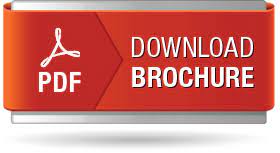About Conference
Infectious Diseases Congress 2024
It is our great pleasure to invite you to take part in the major event 11th International Congress on Infectious Diseases which is mainly focusing on “Exploring the Scientific and Technological Methods to Prevent & Control Infectious Diseases for World Peace." which was scheduled on 22-23 February 2024 at Zurich, Swtizerland.
The conference theme also includes the following areas:
Acute Flaccid Myelitis, Adenovirus, Adult (non-flu) Vaccines, Anthrax, Anti-science, Antimicrobial Stewardship, Avian Influenza (Bird Flu), Biosecurity Issues, Bioterrorism, Botulism, BSE, Business Preparedness, Campylobacter, Candida auris, Chagas Disease, Chikungunya, Childhood Vaccines, Chlamydia, Cholera, Climate Change, Clostridium difficile, COVID-19, Cryptosporidium, Cyclospora, Dengue, Diagnostics, Diphtheria, Dual-Use Research, E coli, Eastern Equine Encephalitis, Ebola, Enterovirus, Enterovirus, Non-Polio, Fecal Transplant, Foodborne Disease, Fungal Infection, Glanders & Melioidosis, Gonorrhea, Guillain-Barre Syndrome, H1N1 2009 Pandemic Influenza, H3N2v Influenza, Healthcare-Associated Infections, Hemolytic Uremic Syndrome (HUS), Hepatitis, HIV/AIDS, Human Papillomavirus (HPV), Influenza Vaccines, Influenza Variants, Influenza, General, Jamestown Canyon Virus, Klebsiella, Lassa, Legionella, Listeria, Lyme Disease, Malaria, Marburg, MCR-1, Measles, Meningitis, MERS-CoV, Misc Emerging Topics, Mpox, MRSA, Mumps, Nipah, Norovirus, Novel Coronavirus, Pandemic Influenza, Pertussis, Plague, Pneumonia, Polio, Public Health, Rabies, Resilient Drug Supply, Respiratory Syncytial Virus (RSV), Ricin, Rift Valley Fever, Rotavirus, Rubella, Salmonella, SARS, Sepsis, Sexually Transmitted Infections, Shigella, Smallpox, Swine Influenza, Tick-borne Disease, Tuberculosis, Tularemia, Typhoid, Valley Fever, Varicella, Viral Hemorrhagic Fever, West Nile, Yellow Fever, Zika.
4 Good Reasons To Attend This Conference
It’s a platform for presenting your up-to-date research
Communication among associates
Latest science and developments
Fresh way of knowledge transfer
Young Research’s Awards at Infection Diseases Congress 2024 for the Nomination:
Young Researcher Forum - Outstanding Masters/Ph.D./Post Doctorate thesis work Presentation and only 25 presentations acceptable at the Infection Diseases Congress 2024.
YRF Registration Benefits:
Young Scientist Award recongination certificate and memento to the winners
Infection Diseases Congress 2024 provides best Platform for your research through oral presentations.
Learn about career improvement with all the latest technologies by networking.
Provide an opportunity for research interaction and established senior investigators across the globe in the fields of Infectious Diseases.
It’s a great privilege for young researchers to learn about the research areas for expanding their research knowledge.
Scope and Importance
Infectious Diseases:
Infectious diseases are diseases caused by harmful organisms (bacteria, Virus Etc.) that enter the body from outside. Disease-causing pathogens include viruses, bacteria, fungi, parasites and, rarely, prions. You can catch the virus from other people, mosquitoes, and contaminated food, water, or soil.
What are the types of infectious diseases?
Infectious diseases can be bacterial, viral, parasitic or fungal. There is also a group of rare diseases called infectious spongiform encephalopathy (TSE).
Viral Infections: A virus is a piece of information (DNA or RNA) inside a protective shell (capsid). These viruses are smaller than cells and cannot reproduce on their own. They get into your brain and use the cellular machinery to make copies of themselves.
Bacterial Diseases: Bacteria are single-celled organisms whose instructions are written into short DNA sequences. Bacteria are everywhere, including on our bodies and skin. Most of these bacteria are harmless and even beneficial, but some bacteria release toxins that can make you sick.
Fungal Disease: Like bacteria, there are many fungi. They are in and on your body. You can get sick when you have too many yeast infections or when fungal infections enter your body through your mouth, nose, or skin cracks.
Parasitic Diseases: Parasites use the body of other organisms to survive and reproduce. Parasites include worms (worms) and some single organisms (protozoa).
Transmissible Spongiform Encephalopathy (TSE/prion disease): TSE is caused by prions, a defect that causes other proteins in your body (usually those in your brain) to become defective.Your body can't use or get rid of these proteins, so they build up and make you sick. Prions are a rare form of infection.
Target Audience:
-
Infectious Diseases Experts
-
Pathologists
-
Infectious Diseases Specialists
-
Pharmacists
-
Epidemiologists
-
Health Care Professionals
-
Microbiologists
-
Bacteriologists
-
Virologists
-
Parasitologists
-
Mycologists
-
Infection Prevention and Infection Control Specialists
-
Infection Prevention Organizations & Companies
-
Immunologists
Sessions/Tracks
Session 1: Infectious Diseases
Infectious diseases are disorders caused by organisms like bacterium, viruses, fungi or parasites. Several organisms sleep in and on our bodies. They are unremarkably harmless or may be useful, however below sure conditions, some organisms might cause illness. Some infectious diseases are passed from person to person. Some are transmitted by bites from insects or animals. And others are non-inheritable by ingesting contaminated food or water or being exposed to organisms within the surroundings. Signs and symptoms vary looking on the organism inflicting the infection; however usually embody fever and fatigue. Delicate infections might reply to rest and residential remedies, whereas some serious infections might need hospitalization. Several infectious diseases, like contagious disease and varicella, is prevented by vaccines. Frequent and thorough hand-washing additionally helps defend you from most infectious diseases.
Types of Infectious Diseases:
Infectious diseases can be bacterial, viral, parasitic or fungal. There is also a group of rare diseases called infectious spongiform encephalopathy (TSE).
Viral Infections: A virus is a piece of information (DNA or RNA) inside a protective shell (capsid). These viruses are smaller than cells and cannot reproduce on their own. They get into your brain and use the cellular machinery to make copies of themselves.
Bacterial Diseases: Bacteria are single-celled organisms whose instructions are written into short DNA sequences. Bacteria are everywhere, including on our bodies and skin. Most of these bacteria are harmless and even beneficial, but some bacteria release toxins that can make you sick.
Fungal Disease: Like bacteria, there are many fungi. They are in and on your body. You can get sick when you have too many yeast infections or when fungal infections enter your body through your mouth, nose, or skin cracks.
Parasitic Diseases: Parasites use the body of other organisms to survive and reproduce. Parasites include worms (worms) and some single organisms (protozoa).
Transmissible Spongiform Encephalopathy (TSE/prion disease): TSE is caused by prions, a defect that causes other proteins in your body (usually those in your brain) to become defective. Your body can't use or get rid of these proteins, so they build up and make you sick. Prions are a rare form of infection.
Session 2: Epidemiology of Infectious Diseases
The medicine of communicable diseases involves study of the prevalence, incidence and determinants of infections in populations. Infectious diseases stay one amongst the foremost necessary causes of morbidity and mortality round the world. Additionally to finding out the rates of and risk factors for communicable disease, ID epidemiologists implement and measure interventions at the individual and community level to: forestall infection (primary prevention) and, among those with infections, to forestall development of malady (secondary prevention) or disease-associated death and incapacity (tertiary prevention).
Session 3: Diagnosis of Infectious Diseases
The diagnosing of a microbial infection begins with associate assessment of clinical and medical specialty options, resulting in the formulation of a diagnostic hypothesis. Anatomic localization of the infection with the help of physical and radiologic is typically enclosed. This clinical diagnosing suggests variety of doable etiologic agents supported data of infectious syndromes and their courses. A mixture of science and art on the part of each the practical and laboratory employee is required. The lab technician should choose the acceptable tests and specimens to be processed and, wherever acceptable, counsel the suspected etiologic agents to the laboratory. The laboratory employee should use the ways that may demonstrate the probable agents and be ready to explore alternative potentialities recommended by the clinical scenario or by the findings of the laboratory examinations. The simplest results square measure obtained once communication between the practical and laboratory is outside.
Session 4: Infection Prevention, Control and Treatment
The transmission of communicable diseases altogether health care aspects is needed for infection interference and management. Some interference should be followed like sanitation, hand laundry; food and water safety and vaccination for infection interference and management to decrease unfold of microorganisms and diseases. Antimicrobial agents also are wont to stop infections caused by animals.
Session 5: Emerging and Re-Emerging Infectious Diseases
The recently recognized and earlier unknown infections that cause public health issues either regionally or globally are raising infectious diseases. Infections showing upward trends in frequency or prevalence worldwide have appeared in areas wherever they're not earlier found. Infectious that's familiar earlier, had fallen to low levels that they were not recognized public health issues. Re-emergence of agents whose incidence of malady had considerably declined within the past; however, whose incidence of malady has reappeared. This category of diseases is thought as re-emerging infectious diseases.
Session 6: STD and Contact Diseases
Infections that are passed from one person to a different through sexual contact are thought as STDs (Sexually Transmitted Diseases). Bacteria, parasites, yeast and viruses square measure the causes of sexually transmitted diseases, there square measure over twenty kinds of STDs example VD, gonorrhoea, HIV/AIDS, Cupid's itch and protozoa infection etc. STDs have an effect on each men and girls, however in several cases health issues square measure severe for girls. STDs caused by bacterium, yeast or parasites will be treated by antibiotics, there's no cure for STDs caused by virus however medicines will facilitate in hindrance and management. Individuals between the ages of fifteen and twenty-four years acquire 1/2 all new STDs, associate degreed one in four sexually active adolescent females has an STD. However, STD rates among seniors square measure increasing.
Session 7: Tropical Infectious Diseases
Neglected tropical diseases (NTDs) – a various cluster of communicable diseases that prevail in tropical and sub-tropic conditions they're caused by a spread of pathogens like viruses, bacteria, protozoa and helminths. Over one billion folk’s globally square measure suffering from these neglected tropical diseases the cluster of parasitic and microorganism diseases causes substantial wellness. As per the reports from World Health Organization (WHO), the main diseases of concern square measure protozoa infection, that affects over one third of the world’s population.
Session 8: Pediatric Infectious Diseases
If a child is suffering with periodic or persistent diseases caused by any infectious agents like microorganism, fungi, parasite or the other rare infection it is called as the pediatric infectious diseases. Children with non-heritable or inheritable disorders of system infections and treated by division of medicine infectious diseases and supply steerage on travel protection.
Session 9: Food and Water Borne Infections
Consuming contaminated foods or beverages causes foodborne diseases. The start of symptoms might occur inside minutes to weeks and often occur as flu-like symptoms. Symptoms of infected person area unit nausea, vomiting, diarrhea or fever because the symptoms area unit flu-like many of us might not acknowledge that the illness is caused by microorganism or different microorganism in food. Foodborne malady will be prevented by correct preparation or by process the food to kill the pathogens.
Session 10: Pulmonary and Chest Infections
Infection of the lungs or airways is understood as chest infection. The most forms of chest infection square measure respiratory disorder. Most viruses cause increase in respiratory disorder, whereas most bacterium cause increase in development of respiratory disorder. Once associate in nursing infected person coughs or sneezes infections square measures sometimes unfold. Virus or bacterium fluid droplets into the air, wherever they'll be inhaled in by others cause infections.
Session 11: Dental and Oral Infectious Diseases
The micro-organism contamination/infection that happens within the mouth at the doorway of nourishing track referred to as Oral Infectious Diseases. Oral infections constitute most typical and expensive kinds of infections that happen within the rims and external body part locus, that for the foremost half incorporate caries, dental mash and periodical ailments, periodontics diseases, external body part odontogenic and non-odontogenic contaminations, oral tissue layer diseases, and peri-embed irritation. Periodontics infections are the foremost well-known infectious diseases of adult.
Track 12: Clinical Infectious Diseases
Clinical studies on the pathophysiology, clinical assessment, restorative microbiology, conclusion, resistant tools, and therapy of illnesses brought on by unstoppable specialists. It includes articles on HIV/AIDS, bioterrorism, emerging illnesses, food security, and antimicrobial resistance. It also includes articles on antimicrobial resistance.
Track 13: Vaccines
A vaccination is a biological treatment that offers active acquired immunity against a specific infectious or cancerous illness. Numerous studies and independent reports have shown the efficacy of vaccinations. An agent that mimics disease-causing bacteria is generally found in vaccines, and this agent is frequently created from the microbe's toxins, weakened or deceased versions, or one of its surface proteins. The substance induces the immune system to identify the substance as a threat, eliminate it, and then identify and eliminate any subsequent bacteria that may be connected with the substance. Inactivated, dead, or attenuated organisms or purified compounds produced from them are frequently found in vaccines. Vaccinations come in a variety of forms. These illustrate several approaches that have been utilized to lower the chance of getting sick while maintaining the potential to trigger a good immunological response.
Track 14: Respiratory and Blood Infections
Respiratory tract infections (RTIs) are infections of parts of the body involved in breathing, similar as the sinuses, throat, airways or lungs. Utmost RTIs get better without treatment, but occasionally you may need to see a GP. Common Cold, Sinusitis, Pharyngitis, Epiglottitis and Laryngotracheitis are respiratory infections. Viral pathogens are the most common cause of respiratory infection in trippers ; causative agents include rhinoviruses, respiratory syncytial contagion, influenza contagion, Para influenza contagion, Mortal Meta Pneumovirus, Measles, mumps, adenovirus, and coronaviruses. Septicemia is an infection that occurs when bacteria enter the bloodstream and spread. It can lead to sepsis, the body's response to the infection, which can cause organ damage and indeed death. Septicemia is more common in people who are rehabilitated or have other medical conditions.
Track 15: Drug Interaction in Infectious Diseases
A change in the way a drug acts in the body when taken with certain other drugs, herbals, or foods, or when taken with certain medical conditions. Drug interactions may cause the drug to be more or less effective, or cause goods on the body that aren't anticipated. These relations do when one medicine (the perpetrator) alters the attention of another drug (the object) with clinical consequences. Medicine commerce occurs when a case's response to a drug is modified by food, nutritive supplements, expression excipients, environmental factors, other drugs or disease. Drug interactions may make your drug less effective, cause unanticipated side goods, or increase the action of a particular medicine. Some drug interactions can indeed be dangerous to you.
Track 16: Global Trends in Emerging Infections
Infectious diseases are now emerging or reemerging almost every year. This trend will continue because a number of factors, including the increased global population, aging, travel, urbanization, and climate change, favor the emergence, evolution, and spread of new pathogens.
Track 17: Global Market on Infections
The global infectious disease diagnostic market was valued at $23,321.99 million in 2020, and is estimated to reach $39,941.37 million by 2030, growing at a CAGR of 6.8% from 2021 to 2030. Infectious disease diagnosis is defined as a laboratory test, which is executed with the help of skilled technicians and physicians to diagnose infectious diseases. It is a diagnostic procedure in which the causative organism of an infectious disease is characterized and identified. The sample of urine, blood, mucus, or other body fluids are analyzed to provide information about the causative organism by the use of various diagnosis procedure and instruments.
Societies & Associations
USA: Infectious Disease Society of America, HIV Medicine Association, International Society for Infectious Diseases, Texas Society of Infection Prevention and Control, American Society of Microbiology, Canadian Society for Immunology, International AIDS Society, Infectious Diseases Society of America, National Association of Infection Prevention and Control, American Society of Infection Prevention.
Europe: European Society for Clinical Microbiology and Infectious Diseases, British Society for Antimicrobial Chemotherapy, Society for General Microbiology, British Association for Sexual Health and HIV, British HIV Association, The Hospital Infection Society, Infection Prevention Society, British Society for Medical Mycology, The Royal Society of Tropical Medicine and Hygiene, Royal Society for Public Health, Healthcare Infection Society, British Society of Parasitology, Surgical Infection Society, European Association of Infection Control.
Asia Pacific: Human Genetics Society of Australasia, Genetics Society of Japan, NDC Medicine, Pediatric Infectious Disease Society of Thailand, Infection Control Association, The Japanese Association for Infectious Diseases, Australasian Society for Infectious Diseases, Chinese Society for Immunology, Asia Pacific Society of Infection Control, Korean Association of Infection Disease Prevention, Korea
Market Analysis
Infectious Diseases Market Analysis and Size
According to the Australian Institute of Health and Welfare, the NNDSS received approximately 593,000 cases of notifiable diseases in 2019. In addition, the almost 447,000 hospitalizations for communicable diseases in 2017–18, 89 percent were caused by non–notifiable infections. The hospitalisation rate for non-notifiable communicable diseases peaked during 2000-01 and 2017-18 at 15.3 per 1,000 people in 2016-17. (nearly 400,000 hospital separations).
Market Research analyses that the infectious disease market which was USD 18.34 billion in 2021, would rocket up to USD 28.73 billion by 2029, and is expected to undergo a CAGR of 5.77% during the forecast period 2022 to 2029. In addition to the market insights such as market value, growth rate, market segments, geographical coverage, market players, and market scenario, the market report curated by the Market Research team also includes in-depth expert analysis, patient epidemiology, pipeline analysis, pricing analysis, and regulatory framework.
Infectious Disease Market Overview:
The global infectious disease diagnostic market was valued at $23,321.99 million in 2020, and is estimated to reach $39,941.37 million by 2030, growing at a CAGR of 6.8% from 2021 to 2030. Infectious disease diagnosis is defined as a laboratory test, which is executed with the help of skilled technicians and physicians to diagnose infectious diseases. It is a diagnostic procedure in which the causative organism of an infectious disease is characterized and identified. The sample of urine, blood, mucus, or other body fluids are analyzed to provide information about the causative organism by the use of various diagnosis procedure and instruments.
The COVID-19 outbreak is anticipated to have a positive impact on the growth of the global infectious disease diagnostic market. The COVID-19 pandemic has stressed the healthcare systems in the world and increased the need for the development of diagnostic instruments & diagnostic service centers. Increase in number of COVID-19 cases surged the demand for real time polymerase chain reaction (RT-PCR) test to detect COVID-19.
Growth of the global infectious disease diagnostic market is majorly driven by increase in prevalence of infectious disease such as hepatitis, influenza, COVID-19, & human immuno deficiency virus (HIV); rise in demand for point-of-care diagnostic test; increase in funding from private & government organizations for diagnostic service centers; and advancements in technologies in the field of infectious disease diagnostics. According to the Centers for Disease Control and Prevention (CDC), in 2018, it was reported that approximately 1.7 million infections and 99,000 associated deaths occur every year in American hospitals. Furthermore, surge in demand for point-of-care testing is anticipated to fuel the growth of the infection disease diagnostic market. For instance, in March 2020, Abbott, a global healthcare company, announced the launch of Abbott ID NOW COVID-19 test, which is a molecular point-of-care test used to detect COVID-19 in as little as 5 minutes. In addition, rise in geriatric population fuels the market growth, owing to the fact that aged individuals are more susceptible to infectious diseases. According to the U.S. Food and Drug Administration (FDA), in 2020, it was reported that around 300,000 individuals aged 50 and above are diagnosed with pneumococcal pneumonia, every year. In May 2021, Neuberg Diagnostic, a leading company that offers best-in-class laboratories, launched the clinical laboratory's operation in the U.S. to offer genomic and molecular testing on new generation sequencing technology.
Infectious Disease Diagnostic Market by Technology:
North America garnered the major share in the infectious disease diagnostic market in 2020, and is expected to continue to dominate during the forecast period, owing to rise in prevalence of infectious disease, presence of key players, development of the healthcare sector, presence of national clinical laboratories, and advancement in technology for diagnostic instruments in the region. However, Asia-Pacific is expected to register the highest CAGR of 8.5% from 2021 to 2030, owing to increase in prevalence of infectious diseases, rise in demand for early diagnosis, development of healthcare infrastructure, and technological advancement in diagnostic testing.
The key players operating in the global infectious disease diagnostic market include Abbott Laboratories, Becton Dickinson and Company, BioMerieus SA, Bio-Rad Laboratories, Danaher Corporation, F Hoffman-La Roche, Hologic Inc., Luminex Corporation, Qiagen Inc., and Thermo Fisher Scientific Inc.












